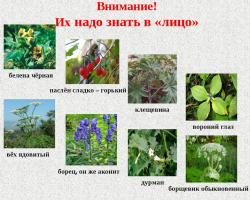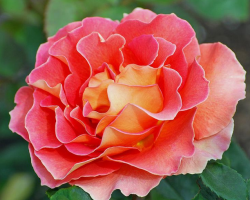The word "fertilizer" speaks for itself: to fertilize the soil means to make it more saturated with necessary nutrients. And for sure all the owners of gardens and summer cottages are aware of the need for such an operation.
Content
- What are mineral fertilizers?
- What are the types of mineral fertilizers?
- What is included in complex mineral fertilizers?
- Why are mineral fertilizers used?
- How to bring mineral fertilizers to the soil?
- Is it possible to mix mineral fertilizers with organic ones?
- What mineral fertilizers cannot be mixed?
- How to choose the right mineral fertilizer?
- Cons of mineral fertilizers
- The best mineral fertilizers for landing in the country
- How to store mineral fertilizers?
- Tips for the use of mineral fertilizers
- Video: Choosing mineral fertilizers
But here is what fertilizers to give preference, organic or mineral, especially today, when so much is said about organic, i.e. natural, agriculture? The answer to this question is simple: fertilizer should be selected taking into account many factors, and you should not abandon effective mineral fertilizers. Why? We’ll talk about this.
What are mineral fertilizers?
- Mineral fertilizers are artificially created. They include inorganic compounds that contain nutritious elements that help the plant develop normally, saturating the soil with many micro- and macroelements, which in turn leads to faster maturation, since all these elements of the plant are absorbed quickly and quite easily.
- For the production of mineral fertilizers, use Selitra, phosphorites, as well as other raw materials that have a natural origin. In addition, waste and by -products of industrial production are used.

What are the types of mineral fertilizers?
Let's start the classification with the form in which mineral fertilizers are available.

She may be:
- Liquid, i.e. In the form of a concentrated solution, which is diluted with water for use. This is the most popular form with fertilizing indoor plants. They do not harm the environment, because Do not fall into the air, but remain in the soil. The liquid form of mineral fertilizers provides rapid and uniform penetration and distribution of them in the soil layer, as well as complete absorption by plants.
- Soluble, i.e. In the form of a powder, also dissolved in water before watering. It is also possible to distribute the powder on the surface of the soil, but in this case there is a risk of spreading it with the wind.
- Granular, most often used in gardening. Granulas up to 5 mm in size provide more economical consumption of mineral fertilizers compared to the powder shape. They are convenient in storage and when introducing into the soil, because Due to the relatively large weight, they are not blown away by gusts of wind.
- Tablet or in the shape of the candles, which are simply introduced into the soil, and then, with each subsequent watering, dissolve in it. The disadvantage of this variety of mineral fertilizers can be considered an uneven distribution of micro- and macroelements in the soil.
If we talk about the area in which fertilizers are used, then the classification is as follows:
- Universal, in which the necessary micro- and macro elements are contained approximately in an equal amount.
- Special take into account the needs of a certain type of plant.
So, for example, if you opt for feeding for trees, then it can be used for all fruit crops. If the fertilizer is intended for roses, then you need to fertilize roses - indoor or garden. You should also pay attention to whether mineral fertilizer is intended for flowering or for non -flowering plants.
And finally, depending on the composition, mineral fertilizers can be divided into:
- Nitrogenincluding ammonium nitrate, carbamide, ammonium sulfate, magnesium sulfate, urea.
- Phosphorus - In the form of ammophos, sulfoammofos and double superphosphate.
- Potassium (in the form of chloride and potassium sulfate).
- Complexcontaining several components. The most common are nitroammofosk and diammofosk.
What is included in complex mineral fertilizers?
- The most commonly used complex mineral fertilizers are ammofos (a combination of nitrogen and phosphorus in a ratio of 52:12), suitable for fertilizer of potatoes and vegetables; not containing ballast substances diammofos (nitrogen in combination with phosphorus - 20:51) and azofosk, combining all three main components - nitrogen, potassium and phosphorus.
- Complicated complex mineral fertilizers can be attributed nitrofoski, received in the processing of apatitis and phosphorites. When other components are added, phosphorus or carbonate nitrophosics, which is basic top dressing, is formed.
- The plant is also necessary microfuiting, which can be found as part of complex mineral fertilizers. In particular, peas and beets significantly win in quality, and berries and fruits are in the concentration of vitamins if you make such fertilizer as bormagagic mixture and boron superphosphate. A solution with boric acid content can be sprayed.
- If pre -sowing preparation of seeds or foliar top dressing is necessary, it is indispensable molybdenum, which is made in molybdenum acid ammonium and superphosphate.
- Application zinc sulfate or zinc sulfate It is favorable for increasing plant productivity, and to potatoes, cucumbers and tomatoes, this composition gives resistance to disease.
- Calcium Contained in lime fertilizers, which, when introduced into the soil, every 4-5 years reduce its acidity or neutralize if ammonia nitrogen fertilizer is applied. At the same time, liming should not be carried out in parallel with fertilizers in order to avoid unnecessary chemical reactions.
- Seed processing and root top dressing are especially effective if the fertilizer contains a sulfate manganese or manganese superphosphate. Such a composition is good for tomatoes, potatoes, fruit trees combined with non -risk introduction of urea.
- To improve the soil, also after 4-5 years, a comprehensive fertilizer is added copper.
- Another option for complex fertilizer - organ-mineral, combining both organic and mineral properties and produced, usually in liquid form or in granules. The composition of such a fertilizer may have peat, manure, compost, waste or oil industry waste subject to chemical treatment. There are many reactions: ammonization, niting, sulfing. Depending on which one is present, the complex is aimed at achieving a different effect.
Why are mineral fertilizers used?
The main task of mineral fertilizers is to replenish the inorganic compounds contained in the soil. In addition, they contain, depending on the composition, certain elements that need sowing during the growth period.

And now - in more detail about why plants are needed by various types of mineral fertilizers:
- Nitrogen fertilizers prevent a slowdown in plant growth, yellowing and falling of the leaves. Accelerates their formation and appearance. Nitrogen refers to the main elements involved in the formation of cells in the operation of chloroplasts. Nitrogen top dressing is necessary annually. Nitrogen
- Potassium fertilizers They help to retain moisture in the plant and, increasing the immunity of the plant, contribute to an increase in its resistance to diseases, in particular, fungal. More often use potassium chloride, less reflected in the acid-base balance. This type of mineral fertilizers is more expensive than the rest due to the use of imported raw materials.
- Phosphorus fertilizers It is necessary for fertilization and photosynthesis, helping the plant during flowering and fruiting. Their deficiency leads to a delay in the ripening of fruits and the deterioration of their quality.
- Complex fertilizers Reduce costs, because at a time they make up for the balance of several necessary elements at once. The main thing when making complex fertilizers is the correct distribution of time.
How to bring mineral fertilizers to the soil?
Usually the introduction of mineral fertilizers in the soil is carried out in several stages:
- Basicwhich is produced before the landing of cultures. At this stage, which is the main in saturation of the soil, the maximum (sometimes up to 90%) of the necessary elements is made. The higher the temperature and less humidity, the higher the effectiveness of the work on the introduction of mineral fertilizers, since the concentration will remain and the risk of leaching of useful elements will decrease. During this period, dry fertilizers can be used, laying them in the soil, which is prepared for sowing.
- Social (submarine) It is the introduction of mineral fertilizers simultaneously with seeds, locally placing them either directly under the seeds or next to them. Thus, the required amount of useful substances that contribute to the germination of seedlings is ensured. At this stage, up to 10% of minerals are made that are necessary for a particular culture.
- Post -person, during which already formed plants are fed. Most often, liquid mineral fertilizers are used in this period, which are the most economical in this phase of development, since the maximum part of the elements is absorbed by leaves. Thus, the plant support occurs at the moment when it is actively growing, and, in addition, the possible lack of micro- and macro elements in the previous stages is compensated.
The most correct application of all three ways will be the most correct, since they complement, but do not replace each other.
If we talk about the number of fertilizers introduced, then the calculation is as follows:
- In the spring - at 10 square meters. m is introduced 200 g of potassium fertilizers, up to 350 g of nitrogen, 250 g - phosphorus.
- Summer top dressing is repeated in a triplely reduced amount.
- In the autumn No nitrogen top dressing is needed, and when digging for the winter, the introduction of a complex mineral fertilizer is used in the amount of 60-120 g/1 sq. m.
About 3 weeks before you start harvesting, all top dressing should be stopped.
Is it possible to mix mineral fertilizers with organic ones?
- It is quite acceptable to save time to mix several types of fertilizers, both directly mineral and including organic ones. But this must be done correctly in order to prevent the loss of nutrients or inappropriate for introducing their shape. In particular, mixing mineral fertilizers is possible if they are in dry loose form. If fertilizers were coded, it is necessary to grind and subsequent sifting them.
- Ammonium nitrate It can be mixed with ammonium sulfate or any other nitrate or ammophos.
- Urea It goes well with the same ammonium sulfate, ammophos or superphosphate in granular form.
- Immediately before entering the soil, you can mix lime material or ash with chloride potassium and urea.
- Granular superphosphate and potassium chloride You can connect with bird droppings, manure and compost. A combination is also possible with urea, but only before entering the soil.
- If you use a hydroponic method of growing, then a strict priority in the dissolution of mineral fertilizers is important, otherwise it is possible that nutrients can fall into an insoluble precipitate. The order is as follows: ortophosphoric acid, magnesium sulfate, ammonium and potassium nitrate, superphosphate and microfuiting Closely dissolved in water.
What mineral fertilizers cannot be mixed?
- Ammonia nitrate cannot be mixed with urea (urea), lime, manure or chalk, with simple superphosphate and ammonium sulfate.
- You cannot combine ammonium sulfate with chalk, lime or manure.
- Urea should not mix with chloride potassium, simple superphosphates, lime or chalk.
- Double granular superphosphates are incompatible with chalk and lime.
- Simple superphosphates are incompatible with ammonium nitrate, urea, chalk and lime.
- The same chalk and lime are not suitable for combining potassium sulfate, chloride potassium and potassium salt.
- The ammonia form of nitrogen fertilizer is not suitable for a combination with lime and ash, since the chemical reactions occurring between them can lead to partial loss of nitrogen.
- Potassium nitrate and salt can be damped if they mix them with superphosphate long before being introduced into the soil.

How to choose the right mineral fertilizer?
General rules for choosing mineral fertilizers are based primarily on their appointment.
They are as follows:
- Tomatoes prefer ammophos, diammophus, nitrofosk;
- Potatoes Nitrophoska and specialized compositions of the “Bon Forte” type are also suitable;
- For cereal and lawn crops The use of granular diammophosics is preferable;
- Fertilizers consisting of two components are suitable for decorative colors;
- For citrus fruits good urea and superphosphates enriched with nitrogen;
- Annual plants during planting and perennials during loosening and mulching of the soil need to make granular complex compositions.
To select mineral fertilizer, the composition of the soil matters.
- So, tomatoes The most comfortable on the beds of peat with a loam, where manure (preferably rotted) and the necessary mineral fertilizers are introduced.
- Cucumbers They prefer humus, fresh manure and straw, on which the soil is laid. In each hole dug for potatoes, a quarter of a shovel of wood ash will be useful and half as much - humus.
- BUT beets with carrots, garlic and onion It will be better if a couple of days before planting to scatter organics on the beds and dig them.
Cons of mineral fertilizers
- The only minus of mineral fertilizers is the risk of their improper use. The use of an expired drug will bring absolutely no benefit of either the soil or the plant.
- If you overdo it with a dose, then, instead of benefit, significant harm will be done, nitrogen fertilizers are especially dangerous in this regard, an excessive number of which can accumulate in crops in the form of nitrates. In addition, mineral fertilizers are more expensive than organic.
The best mineral fertilizers for landing in the country
Complex
Now let's consider how this or that mineral fertilizer affects different types of plants. Let's start with the complex, as they have a wide range of exposure.
- Ammofosused as the main refueling for almost all crops. Ammofos is easily dissolved and is often used in greenhouse growing conditions, as well as for feeding the soil with a lack of phosphorus. Digging the site in the autumn period, it is necessary to add potassium fertilizer.
- Nitroammofoska (Azofoska) In the autumn period, it is introduced under any culture, and in the spring-summer for top dressing. It is a universal fertilizer, the formation of a slight sediment is acceptable. The dissolution process in water is slightly harder than for potassium or nitrogen fertilizers.
- Nitrofosk It acts quite slowly, therefore, for top dressing is used less often than in the main gas stations. During dissolution, the precipitate is formed due to insoluble phosphorus compounds of phosphorus. Suitable for long -term storage.
- Diammofos It is a universal fertilizer for any vegetables. It is introduced in the spring in neutral soil.
- Potassium nitrate, is used in the spring-summer period when feeding any garden plantings.
- Potassium sulfate or potassium sulfate It is applied during spring digging of soils under vegetable and fruit crops. Especially effective in fertilizing acidic soil, since it positively affects the correctness of the acid-base balance. The combination with urea and chalk is unacceptable.
- Ammonium nitrate It is used on exhausted soils, feeding them. To avoid the accumulation of nitrates, you should not be used to fertilize pumpkin.
- Simple superphosphate. A combination with other components is unacceptable, for which the introduction of superphosphate is carried out no earlier than a week after such fertilizers were used.
- Double superphosphate Suitable for any soil and culture. It is introduced in the fall and in the spring during digging. Perhaps a combination with potassium fertilizers.
- Urea or urea They are usually used to feed the plant during the growing season, as well as fertilize the soil before the upcoming sowing. As a rule, lime is introduced in combination with urea to reduce the acidity of the soil.
- Potassium chloride or potassium salt. Fertilizer is applied in the autumn during the digging of the soil. A significant chlorine content makes fertilizer unsuitable for berries and grapes, as well as for potatoes and legumes.

Nitrogen
- Nitrogen fertilizers contribute to an increase in green mass and increasing productivity.

Signs of nitrogen deficiency are slow growth, thin and weak shoots, small, crumbling foliage and fewer inflorescences.
- Vegetable crops with a lack of nitrogen have lighter leaves than usual, and the foliage of fruit crops reds. The most clearly such signs are noticeable in apple trees, strawberries or strawberries, tomatoes and potatoes.
- Average norms: for nitrate - about 25 g/1 sq. m; For urea - about 20 g/1 sq. m; For ammonium sulfate - about 40 g/1 sq. m.
Potassium
- Potassium contributes to the absorption of nitrogen, an increase in the velocity of protein formation, increased tissue strength, and a decrease in the number of nitrates.
A sign of potassium deficiency is the appearance of brown spots on the leaves of the plant, the withering away of the edge of the sheets, their twisting, refinement of the stem, and slowing down the growth of the plant.
- For potassium mineral fertilizers, the following entry standards are recommended: about 25 g/ 1 sq. m - for potassium sulfate; The same is for a potassium-magnesium drug.

Phosphorus
- Phosphorus contributes to the ripening of fruits, an increase in the root crops of the amount of sugar and increasing productivity as a whole.
A sign of phosphorus deficiency can be: the manifestation of blue-green spots on the leaves; drying and turning of the edges of the leaves; bad germination of seeds; Deformation of seedlings or flowers.
- On average, the required amount of phosphorus mineral fertilizers is as follows: about 60 g/1 sq. m - for superphosphate; about 40 g/1 sq. m - for double superphosphate.
- All of the above values \u200b\u200bare averaged and can vary depending on the type of soil and its properties, as well as on how much active substance is contained in fertilizer.
For potatoes
In the spring, preparing the soil, mineral fertilizers are entered at the rate of 1 square. m.

For tomato
- 20 days After the seedlings are planted in the greenhouse, the first top dressing is carried out: a tablespoon of nitrofoski per 10 liters of water. The average norm is a liter of solution for each bush.
- After 10 days A second top dressing is carried out: a teaspoon of potassium sulfate per 10 liters of water.
- More after 12 days The third top dressing is carried out by the following solution of mineral fertilizers: a tablespoon of superphosphate per 10 liters of water, to which you can also add a couple of tablespoons of wood ash.
For cucumbers
- Cucumbers should begin to feed the soil for the future planting of cucumbers, introducing the following composition during the cutting of the soil: 25 g of potassium salt, ammonium sulfate and ammonium nitrate.
- II (root) top dressing is carried out dissolved in 10 liters of water with two tablespoons of superphosphate.
- Fulfenting fed for activating flowering: a quarter of a teaspoon of boric acid and a couple of crystals of potassium permanganate on a glass of water for spraying.
- The third is carried out by spraying cucumbers with a solution of urea (about 15 g per liter of water).
For strawberries
- They begin top dressing with the beginning of relative heat, introducing under each bush to a liter of the next solution: a tablespoon of nitroammofoski per 10 liters of water.
- When the crop is harvested, the soil is fertilized with this composition: a teaspoon of potassium sulfate and 2 tbsp. l. nitrofoski per 10 liters of water. Autumn top dressing may consist of introducing a complex mineral fertilizer.
For seedlings
- After the snow has melted, they make nitrogen Fertilizers that will contribute to increasing lush and healthy greens.
- With the beginning of the formation of buds, it is necessary to make potassium-phosphorus mineral fertilizers, which will accelerate flowering.
- After flowering, feeding with potassium fertilizers is carried out.

How to store mineral fertilizers?
- The best place to store mineral fertilizers - the cellar, the basement and other non -residential room. Fertilizers with fertilizers are laid out on shelves, stands - the main thing is not on the ground and not in the open air in order to avoid damping. Humidity should not exceed 40%, exceptions are phosphates that are not afraid of excess moisture.
- Periodically, the room should be ventilated by monitoring the temperature (it should be in the range from 0 ° C to 27 ° C). Most often, the warranty shelf life is about 2-3 years, although, as practice shows, under proper storage conditions, it is almost unlimited.
Remember that mineral fertilizers are a certain danger to the body, so when storage, you should ensure that the room remains inaccessible to children and animals.
- In the manufacture of the solution, it is necessary to use respirators, glasses, gloves so that the drug does not get on the mucous membranes.
- And while working on mineral fertilizers, take breaks every quarter of an hour.
Tips for the use of mineral fertilizers
- Strictly adhere to the instructions and do not change the concentration of fertilizer in your opinion.
- Do not apply fertilizers to dry soil - This is fraught with burns and diseases of cultures.
- Do not use mineral fertilizers if the plant is in a state peace Or just transplanted.
- The slower the plant grows, the less often it needs top dressing with mineral fertilizers.
- For flowering plants Feeding is important at the beginning of the flowering period. If it falls in the winter period, top dressing should be year -round.
- Foreigning for open ground begins after warming it up to not lower than 10 ° C. At a lower temperature, the absorption of nutrients is impossible.
- Liquid mineral fertilizers Apply directly to the root, since the use of watering can cause spray on the leaves and their subsequent burn.
- Buy only high -quality, proven fertilizers.
- Do not prepare solutions in the dishes that is designed to cook food - use special containers.
- To store mineral fertilizers, use harding containers.
- If the drug was cream, it should be pre -sift before use.
- If you simultaneously use organic and mineral fertilizers, the dosage of the latter should be reduced.
- To increase the fertility of the soil alternate the compositions.
- To determine the deficiency of a particular element, ideally, you need soil analysis.
- You can check the soil reaction to a particular mineral fertilizer using litmus paper. Its coloring in blue speaks of alkaline soil, in red - about sour.
We will also tell:
- How to feed the seedlings of Petunia
- How and how to feed the thuja
- How to understand that it is time to feed raspberries in the spring
- How to feed the peonies
- How to fertilize strawberries







